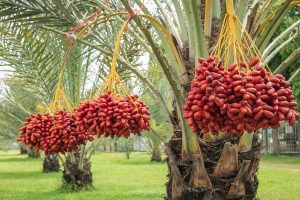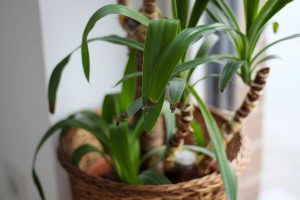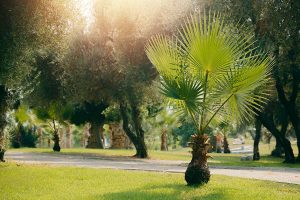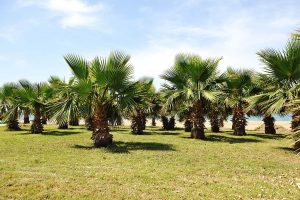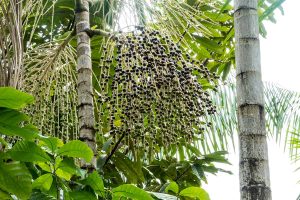Most people think of palm trees as the tropical leafy landmarks lining the edge of paradise-like beaches, but in fact there is so much more to the palm tree than its iconic Malibu reputation. Palm trees belong to the Arecaceae family, and within this there are 181 genera of palm trees, and more than 2500 palm species.
When looking to understand the life cycle and the typical life expectancy of a palm tree, it’s important to also consider how wide-ranging these plants can be, because this plays a vital role in palm tree lifespan.
Table of Contents
Average Palm Tree Lifespan
The life expectancy of a palm tree varies enormously depending on which species of palm you are talking about, what type of environment it is growing in, and other factors such as the size of the plant and the level of care it receives. Each different species of palm will have a different average lifespan.
If you want to know the average lifespan of all palm trees, then you are looking at a figure of around 70 years. Many smaller palm trees will not live beyond 30 or 40 years, while the large palm trees can live in excess of 100 years. Some even claim that the Date Palm Tree can live beyond 200 years.
When you consider all of the palms as one group, including both indoor palms and outdoor palms, your average life expectancy will be approximately 70 years from seed germination to death.
What Effects Palm Tree Lifespan?
There are things you can do if you want to extend the lifespan of your palm tree, though in many cases there are factors which will be out of your control which are also at play in deciding the life expectancy of your palm.
Size
The size of a palm is one of the best predictors of its estimated lifespan, which can be particularly useful if you don’t know which species of palm you have.
Generally speaking, the smaller the palm, the shorter the lifespan will be, and the taller the palm is, the longer the lifespan will be. The Kentia Palm is believed to have the shortest lifespan of all palm trees, which reaches maximum heights of 60 feet in the wild.
Species
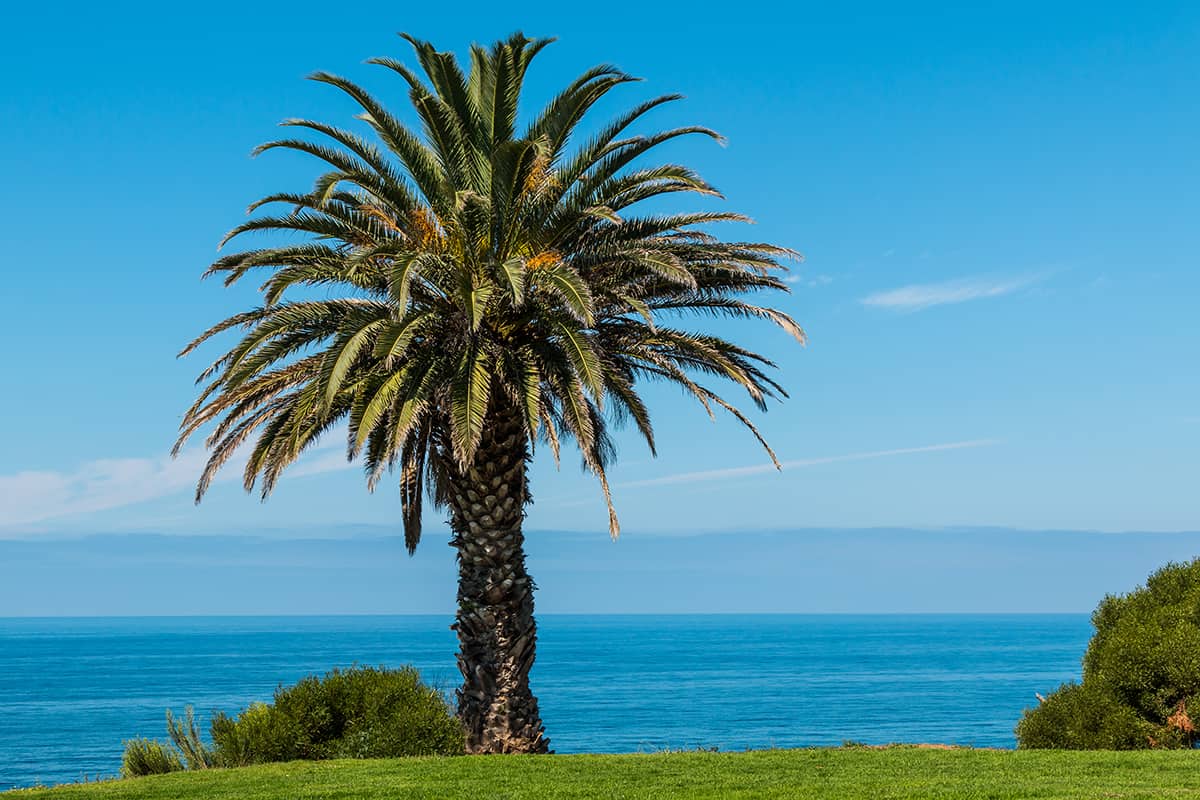
The species of a palm tree is going to dictate how long a palm can live for, though not necessarily how long it will live for. Each species of palm will have in-built DNA that effectively decides the rough maximum age of a healthy palm, but whether or not the palm is able to reach that age will be dependent on outside factors such as the type of soil it is grown in and the temperature.
For example, Coconut Palm can reach ages of up to around 90 years, but due to the deadly lethal yellowing disease which is spread from tree to tree via leafhoppers throughout Florida, many Coconut Palm trees in this state do not make it to their potential old age.
Environment
The environment is one of the main determining factors when it comes to the age a palm tree is able to reach, and if you are growing a palm tree at home then this is something that you can impact yourself to help extend the lifespan of your plant. When grown outdoors, most species of palm tree require warm temperatures of at least 72°F, and a minimum annual rainfall of between 30 and 50 inches.
Most palm trees are tolerant to wind and wet conditions, as long as they have well-draining soil. Many prefer full sun, though this is species dependent as some palms can also tolerate shade. Nutrient deficient soil is preferable.
There are plenty of environmental factors which affect palm tree lifespan that are out of our control. For example, natural disasters such as earthquakes and heavy flooding or hurricanes can shorten the lifespan of palm trees, as well as pests and diseases.
How to Extend Palm Tree Lifespan
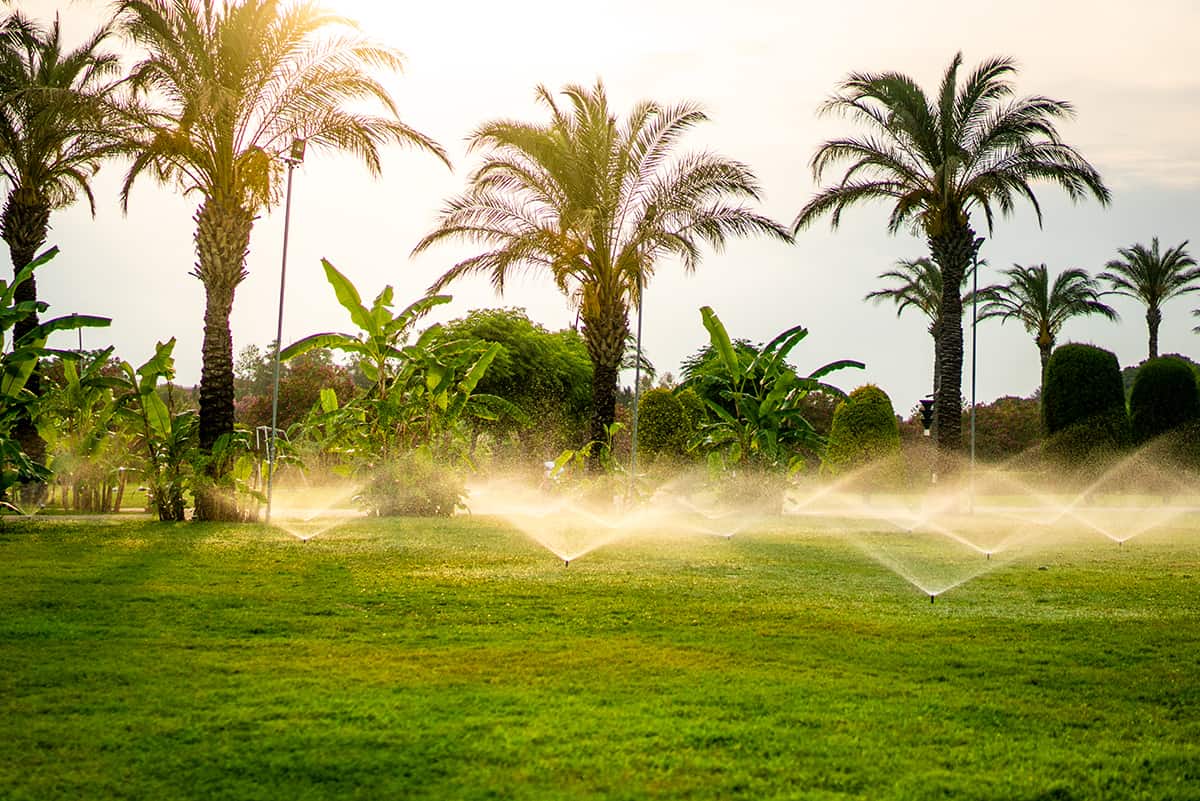
If you are growing a palm tree in your garden, or in your home as a houseplant, then there are plenty of ways you can help it to thrive. Ensuring the palm is kept healthy and its needs are met are the best ways to give it a shot at meeting its potential maximum life expectancy.
Know your Species
Not all palms come properly labeled from nurseries, so if you don’t know the specific species of your plant you may encounter some problems.
This is because different palms have different needs, for example the Kentia Palm can tolerate low light levels, while the Bamboo Palm needs bright light to survive. When purchasing a palm tree, make sure it has a name tag. This will make your job of extending its lifespan so much easier.
Keep it Hydrated
All palms love moisture. In their native habitats they grow in wet rainforests, so this is the type of environment you’ll need to replicate for your houseplant, or in your garden.
In the summer months, water your palm so that the soil is always moist, though do not let the plant sit in standing water. In the cooler months, allow the top few inches of soil to dry out before adding more water, but don’t let the soil dry out completely.
Let there be Light
Most palm trees need plenty of light, but this isn’t always the case so be sure to follow the requirements of your plant species. Position outdoor plants in a spot where they won’t be shaded by nearby buildings or other trees, and set indoor palms in bright, indirect light.
Raise Humidity
All palms enjoy high levels of humidity, and for some it is an absolute requirement. If the humidity in your home is low, you may notice the ends of your palms leaves will turn brown. Increase humidity by using water mist sprays, pebble trays, or electric humidifiers.
Keep it Warm
Most palms are not cold hardy, but there are exceptions to this such as the Needle Palm. Only plant warm-temperature palms in your garden if your local climate is suitable, and otherwise keep them as houseplants.
How to tell Palm Tree Age
If you were to cut down a palm tree through the trunk, you would not find the rings that you would typically see with other trees. This is because palm trees are not technically trees, and their trunks are not technically trunks. Instead, the trunk of a palm tree is actually a stem, because it is entirely made of fibrous tissue.
This makes it harder to estimate a palm tree’s age compared with other trees, where the rings can be counted to make fairly accurate predictions. Instead, scientists who study trees have found that the best way to determine the age of a palm is by looking at its frond scars.
These are marks left on the tree as the fronds are shed, and the amount of scars can be used to estimate the age. The more frond scars a palm tree has, the older it will be. The only way to know the age of a palm tree for certain is to make a note of when the seed was planted and track its growth from there.
What to Do with a Dead Palm Tree?
When a palm tree has gone through the end of its life span, you know that it’s time to get rid of it. It’s essential to know the right steps to take. First and foremost, removing the dead palm tree from your property is crucial. Hiring a professional palm tree removal company is recommended, as they have the necessary tools and experience to remove the tree safely.
After the dead palm tree is removed, there might still be a stump left on your property. Don’t worry, as there are ways to deal with this as well. You can remove the palm tree stump using various methods such as grinding, digging it out manually, or applying a chemical stump remover.
As you consider what to do with a dead palm tree, remember to prioritize safety above all. Removing a dead palm tree can be a dangerous task, especially if it’s tall or located near buildings or power lines. Always hire a professional team to handle the removal process and avoid any potential hazards that may arise.

